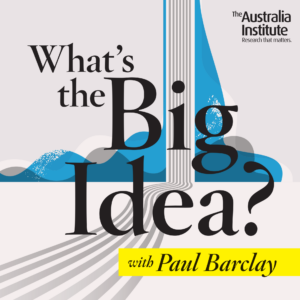The spot price for squirrel glider credits in New South Wales last month was $425. That was down a touch from $450 in August, when koala credits were going for $600 – they’d more than tripled since June.
These are real market values, reflecting performance and trading activity in a way that’s visually similar to any financial exchange. But these spot prices and trade volumes do not apply to the animals themselves, rather to the habitats and ecosystems that they occupy. They’re listed on the Biodiversity Credits Market Sales Dashboard, run by the New South Wales Department of Planning and Environment.
The biodiversity credits are awarded to landholders for protecting and improving habitat, and the trades displayed on the dashboard occur when a developer buys those credits to “offset” the destruction of land elsewhere. If squirrel glider habitat is destroyed, then the developer must purchase squirrel glider credits to make up for it. Net destruction of the environment is theoretically neutralised.
Environmental markets are shaping up to be yet another failure of neoliberal policy, examples of which are littered throughout the rest of the economy. Biodiversity offsetting schemes are not new and they exist in all Australian states. However, Dr Megan Evans, a senior lecturer in environmental policy, governance and economics at UNSW, says that there is no evidence that they have succeeded in meeting their goal of “no net biodiversity loss”. In fact, Evans, who has advised government and business on environmental markets, says that “offsets typically, at best, lock in existing environmental decline”.
This situation isn’t unique to Australia. University of Melbourne ecologist Dr Yung En Chee agrees with Evans and adds that “despite the lack of success anywhere in the world, so many governments seem determined to establish and defer to markets rather than exercise evidence-informed judgement and moral leadership”.
The Australian government is working on legislation for a biodiversity trading scheme at a national level. Branded as a “nature repair market”, the details beyond the name are vague. The government can’t or won’t say exactly what it will achieve, whether it will be an offsetting scheme, or guarantee that anyone will even buy the credits or certificates it generates. But the lack of detail has not deterred Minister for the Environment and Water Tanya Plibersek from enthusiastically promoting the scheme as a prospective “Green Wall Street: A trusted global financial hub, where the world comes to invest in environmental protection and restoration”.
This vision – a curious metaphor given how frequently Wall Street has crashed – not only invokes imagery similar to the NSW market dashboard, it also appears to broadly capture Labor’s approach to environmental policy, even in these early days of government.
Labor came to the election promising to bolster environmental monitoring and enforce legislation to protect Australia’s collapsing ecosystems. These promises were reiterated this week in the report Nature Positive Plan: better for the environment, better for business, a response to the 2020 landmark review of Australia’s overarching environment legislation, the Environment Protection and Biodiversity Conservation Act 1999 (EPBC Act).
However the report makes little mention of the significant funding that would be required to achieve this. Evans and Chee say that other funding announcements made so far for threatened species have been “wholly inadequate”, and pale in comparison to the billions of dollars in fossil fuel subsidies. Labor has previously refused to stop approving new gas and coal projects.
Despite its reluctance to put a price on carbon, the government has publicly embraced putting a price on nature. Minister Plibersek is attending the United Nations Biodiversity Conference (COP15) in Montreal this month to discuss Australia’s role in addressing the global biodiversity crisis, and presumably to endorse the financialisaton of natural assets.
In Australia, the environmental markets that have been established for water, carbon and biodiversity have all proved counterproductive. And media investigations into the NSW biodiversity scheme have revealed extensive corruption. The Australia Institute found that land clearing in NSW has increased because of Australia’s carbon market. The water market is a “case study in everything that can go wrong when our policy response to protecting a natural resource is to commodify it”, says Maryanne Slattery, principal of the water consultancy specialists, Slattery & Johnson.
Environmental markets are shaping up to be yet another failure of neoliberal policy, examples of which are littered throughout the rest of the economy. The electricity market is in seemingly endless crisis after competition reforms that were meant to fix it. Market-based disability care is currently the subject of a federal review in response to continuing reports of neglect, deaths and difficulties accessing services under the National Disability Insurance Scheme. The royal commission into aged care found that substandard care and abuse were more prevalent among for-profit providers.
The deregulation and privatisation of essential services too often just creates private profits, rather than fixing public problems. Yet as economist John Quiggin points out in his book Zombie Economics, some bad ideas are just impossible to kill. Possibly because it usually takes several years for the full extent of a bad idea to become apparent – during which time great promises can be made and great damage concealed.
Unsurprisingly, a key recommendation of the EPBC Act review was that the government develop mechanisms that “attract private investment” and generate “private return” on conservation. Moreover, the government highlighted the nature repair market in its Nature Positive Plan response.
Supporters from the financial, non-profit and academic sectors are also receptive to the idea. Increasingly porous boundaries between conservation, philanthropy and capitalism have resulted in commercial collaborations between industry, financial institutions and a growing number of green groups and ecologists. All eagerly use almost indistinguishable language around “natural capital” and “nature-based solutions” and promote apparently lucrative investment opportunities in nature.
Ken Henry, former secretary of the Department of the Treasury, former chair of National Australia Bank and a champion of competition policy and deregulation, is representative of this philosophical merging. Henry is on the board of several non-government organisations, including Accounting for Nature, which develops “environmental accounting” standards and whose methodology was recently used by Australia’s biggest commercial environmental markets developer to devise Australia’s first voluntary “nature credits”. Henry strongly advocates a role for the private sector in environmental restoration, saying, “It’s no longer entirely up to the government to fund this stuff or achieve those goals through regulation alone.”
Henry surely knows better than most that the government has never funded or adequately regulated this “stuff”. As Treasury’s most senior bureaucrat for 10 years, he had unique insights into environmental budgets. A passionate conservationist, Henry was heavily criticised for taking leave from Treasury during the global financial crisis to care for endangered northern hairy-nosed wombats that required around-the-clock monitoring by volunteers in a national park. Arguably, proper regulation, management and funding from state and federal governments would have meant Henry never had to leave his post. Henry also has firsthand experience of the role that robust regulation and public spending played in Australia’s relatively successful navigation of the global downturn.
While there is something distasteful about a trading dashboard for koala habitat, the argument against the marketisation of nature isn’t ideological – it’s that the economic conditions for a “nature market” simply aren’t there. The ideological ones are the proponents who continue to evangelise despite years of empirical failure.
Markets work when there are many well-informed buyers and sellers of a standardised product, power is evenly distributed, and fraud is easily detected. Speaking to The Saturday Paper, Quiggin explains: “Where the good being traded is poorly defined and hard to measure … markets are unlikely to perform well.”
There is not only an inherent contradiction in creating a low-risk, tradeable commodity out of something as complex, diverse and unpredictable as “nature” – conditions for fraud are also high. “The incentive for participants is to find low-cost options which fit the rules of the market, but may not deliver the intended good. Such an outcome is highly likely to emerge from a market for biodiversity,” Quiggin adds.
Government-created markets aren’t even as efficient and cost-effective as we are led to believe. They are unwieldy, with high material and transaction costs in the form of regulatory and bureaucratic infrastructure, oversight, and payments to private providers. When things go wrong, the government is inevitably forced to intervene. The Victorian government is re-introducing a public electricity provider with the State Electricity Commission in recognition that “privatisation has failed”, according to Premier Daniel Andrews.
There are more efficient and cost-effective environmental policy alternatives to complicated and elaborate market mechanisms such as a Green Wall Street. Not as flashy, but less risky and with a higher chance of success when credibly implemented.
Long-time campaigner and former Environment minister Peter Garrett has unique experience balancing pragmatism and effective environmental outcomes. While public policy in general isn’t always easy to implement, he tells The Saturday Paper, “There are things that just tend to make more sense than others … policy alignment, robust regulation and not subsidising industries doing the damage are all simple but powerful measures.”
Economist and philosopher Adam Smith said, “As soon as the land of any country has all become private property, the landlords, like all other men, love to reap where they never sowed, and demand a rent even for its natural produce.”
Grants, education, monitoring programs and direct incentives could be delivered to communities to manage their properties without lining the pockets of the “landlords” – brokers, project developers and other financial interests.
In delivering the State of the Environment address in July, Minister Plibersek condemned the Coalition government for making “nice promises”, but rarely bothering to deliver them. Under Labor, it seems the biggest risk to Australia’s environment is that it will keep its promise – of leaving the protection of our most fragile ecosystems to the private sector.
This article was first published in the print edition of The Saturday Paper on December 10, 2022 as “Koala bear market”.
Between the Lines Newsletter
The biggest stories and the best analysis from the team at the Australia Institute, delivered to your inbox every fortnight.
You might also like
We need political courage, not caution | Polly Hemming
When it comes to solving the biggest national problems, a bit of courage leaves political caution for dead. Now’s not the time for politeness.
Integrity at home shapes global outcomes – Polly Hemming | Climate Integrity Summit 2025
Despite frequent claims that Australia is ‘too small to make a difference,’ historical evidence demonstrates our nation’s outsized role in influencing international norms and policies.
Now is the time for brave reform
A housing crisis, accelerating climate change and widening inequality all confront the re-elected Albanese Government, but the solutions exist (and often aren’t that complicated).



